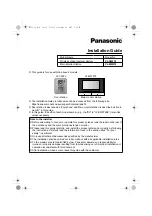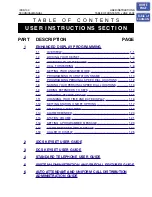
4.3 Line-Set Installation
Use care to unroll coiled copper tube. Leave protective end-caps in place to prevent contamination of heat-
transfer fluid. System degradation due to the contamination of fluid is not covered by warranty.
Seams should be taped with tape that will not dry out and disintegrate (i.e., duct tape). Lines may be pulled
as a bundled. Use straps to secure lines to rafters. Ensure straps are not in contact with copper lines due to
risk of galvanic corrosion (copper or plastic straps are recommended). Do not compress insulation when
bundling or securing lines (Fig. 4.3.1).
Line-set tube coils are available in 50’ and 75’ lengths.
Line-sets longer than 100’ are not recommended due to
the pressure drop through the system. It is best not to have
any joints or fittings. If line-set tube must be extended, do
not use lead or tin solder. The heat-transfer fluid will
degrade lead and tin solder, eventually causing leaks.
Brazing and flare union-fittings are permissible.
Wall, ceiling and roof-penetration may be a 2½” hole or
two 1¼” holes. Penetrations must be sealed appropriately
to maintain weather-proofing, sound-proofing, vermin
intrusion and fire integrity without impairing enclosure
functions. Roof penetration between collectors is
recommended as collector flashing hides line-set
penetration and eliminates need to protect insulation from
damaging UV.
When working in attics or confined spaces, determine type and quality of insulation material. Use
appropriate respirators or masks as necessary to prevent inhalation of insulation material.
A dedicated tube-bending tool must be used for tight bends. 3- and 4-collector
installations have tight tube bends on roof and a proper tube-bending tool is required. A proper
tube-bending tool may be necessary for 1- and 2-collector installations. A tube-bending tool is
recommended for line-set connections to Energy Station to provide clean, vertical lines.
Supply and return lines do not have to be differentiated. Control wire conductors do not have
to be differentiated.
Line-set must be insulated with refrigeration Insulation suitable for high temperatures such as
Armaflex, Aerocel or Gulf-O-Flex. Lower quality insulation (e.g. split foam tube) will degrade or
melt at high temperatures. Building materials must be insulated from elevated temperatures of
system components. Protective caps must be kept on ends of tubes until final connections are made
to prevent contamination of tubes and of heat-transfer fluid.
Fig. 4.3.1 – Line-set straps.
Solar Collector
Installation Manual
10
Module 4
Содержание EWRA1
Страница 37: ......













































